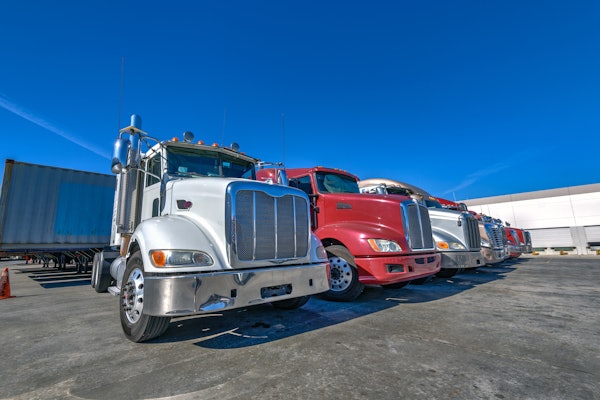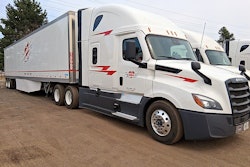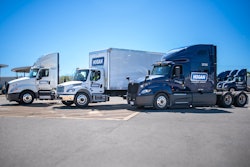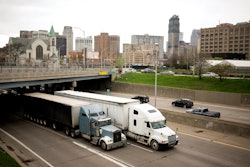The 2025 Atlantic hurricane season is supposed to be an active one. The National Oceanic and Atmospheric Administration a 60% chance of "an above-normal season", with 13 to 19 named storms expected, including six to 10 hurricanes and three to five major hurricanes.
Natural disasters can a fleet’s technology infrastructure, but moving business critical systems off site can get companies back up and running quickly, even if there’s significant damage at their home terminal.
Speaker 1:
The best way to protect your business systems from natural disaster is to get 'em out of the way. You're watching CCJs 10 44, a weekly episode that brings you the latest trucking industry news and updates from the editors of CCJ. Don't forget to subscribe and hit the bell for notification so you'll never miss an installment of 10 44. Hey everybody, welcome back. I'm Jason Cannon and my co-host on the 10 44, as always is Matt Cole. Hurricane season opened this month and it's supposed to be an active one. The National Oceanic and Atmospheric Administration says there's a 60% chance of an above normal season that's 13 to 19 named storms expected including six to 10 hurricanes and three to five
Speaker 2:
Major hurricanes, whether it's a hurricane, fire, flood, or anything in between. Natural disasters can cripple trucking operations in a lot of ways, including crippling of fleet's, technology infrastructure, moving business critical systems offsite can help fleets get back up and running quickly, even if there's significant damage at their home terminal.
Speaker 3:
There's a couple different models, obviously co-location facilities, so data centers and co-location facilities offer a lot. You can use 'em as an active passive where basically you rent space from 'em, and so there's some really good co-location facilities. And then of course the cloud.
Speaker 1:
A co-location facility gives a fleet of physical technology presence offsite that can be used to run live or used as a backup.
Speaker 3:
A co-location facility is somewhere where you share data center space, so there may be a lot of different companies in there, and it's a data center where you share spaces, so picture a huge warehouse with a thousand different companies and you're all sharing space and so you have a cage with your equipment, you have access to that cage whenever you want to go in there. You can go in there, they have Teleco into that cage for you and it's your cage, but it's their facility. They provide cooling and power. You provide the equipment, so you're within the facility and the co-location facilities are all over the place. You can go for top of the line that are the tier four gold from ones that you just have your backup stuff. And so some of the backup, some of the co-location facilities people don't run off of.
What they do is they just have their gear in and they'll cut to in case of a natural disaster like a hurricane. So let's say you're on the east coast, maybe you'll have some equipment in a co-location facility somewhere in Dallas, Texas for example. There's a lot of co-location facilities, believe it or not, in Las Vegas and Las Vegas was chosen because if you look at a map, it's considered one of the safest places in the United States from a natural disaster perspective. And so I think co-location facilities are typically a very good option, especially for things like redundancy.
Speaker 2:
A co-location facility can help a fleet determine how much space and hardware is needed depending on what the fleet's trying to accomplish. By moving tech offsite,
Speaker 3:
What you do is you tell 'em, you say, Hey, this is how many servers that I have, and then they'll say, okay, this is how much cage space that you need based on your footprint, and then they'll spec that out for you and then you determine the level redundancy you need from a telecom perspective. What they do then is they have telecom space within the co-location facilities. They may have 2, 3, 4, 5, 6 or more and depending on their status, and so they will provide all of that. They'll have backup power, they'll have the generators, the UPSs to keep the facility running, and then they'll give you a monthly price. And again, you can run live out of there or you can just use that for redundancy.
Speaker 1:
The other solution to moving technology off premises is one, you're probably more familiar with the cloud.
Speaker 3:
I think a lot of people also take that and then create the virtual machines in the cloud. And so obviously two of 'em are Microsoft Azure and then AWS. And so I know for example, there are things that we back up at N-M-F-T-A that were on physical servers on site or in a data center that get backed up into a cloud as a redundancy. And like for example, they'll have east coast, west Coast, they'll also have things outside the United States, but that can be used as redundancy also is to back it up into the cloud.
Speaker 2:
How a fleet should use its off-premises technology as a backup or operating live from it really comes down to what your fleet's capable of handling from a technology standpoint and what your IT budget is.
Speaker 3:
I think there's pros and cons to both. It depends on the size of your IT staff and the skillset of your IT staff. If you have a smaller IT staff and your budget, if you have a smaller IT staff and maybe you're a smaller shop, I think cloud-based is the best way to go. If you have a bigger IT shop and you can do it, I think the colo is a better option. I think a lot of people are getting the servers out of the basement and starting to think about it. And this is, I mean, I've dealt with this before, not only hurricanes, but fires in California. I've had to cut over data centers because of fires in California, earthquakes in California, storms on the east coast, Katrina, so I've had to unfortunately do things like this last minute several times. And the other thing to think about is how long can your downtime be?
Do you want to go active, active or active passive? And so that's always the other thing. That means how quickly do you back up the data? Is it real time or is it every 15 minutes? So that also comes into play with your data strategy, backup strategy. What's your downtime determines your backup strategy? How often you back up your data? Do you go active, active, active, passive? So always something to also keep in mind, how real time do you have to be and how long can you be down? So I know if you're a Schneider, you probably can only be down for five minutes. If you're a smaller company, maybe you can be down for a couple hours and what's your risk of data loss? All that comes into play.
Speaker 1:
Joe did say that if your shop is technology challenge, cloud-based options might be the best solution for you because there's so many resources available to help
Speaker 3:
Backing up cloud-based would be best. And part of that is there's more resources to help you and to guide you. And if you needed to get some external help, there's more people to contractors and things like that to help you out.
Speaker 2:
Both and cloud-based solutions are pretty secure. Joe said, as long as they're configured correctly,
Speaker 3:
They're both only as secure as they were configured. If the configured properly, I think they're both secure, but they're both only as secure as they're configured. It's a different skillset, and I think that goes back to security. The skillset to set up and manage the on-prem is similar to the data center, but the skillset to set up and configure the cloud-based is different. So you got to make sure you have that right skillset to not only set it up, but also to configure it from a security perspective.
Speaker 1:
That's it for this week's 10 44. You can read more on ccj digital.com. While you're there, sign up for our newsletter and stay up to date on the latest in trucking industry news and trends. If you have any questions or feedback, please let us know in the comments below. Don't forget to subscribe and hit the bell for notifications so you can catch us again next week.










